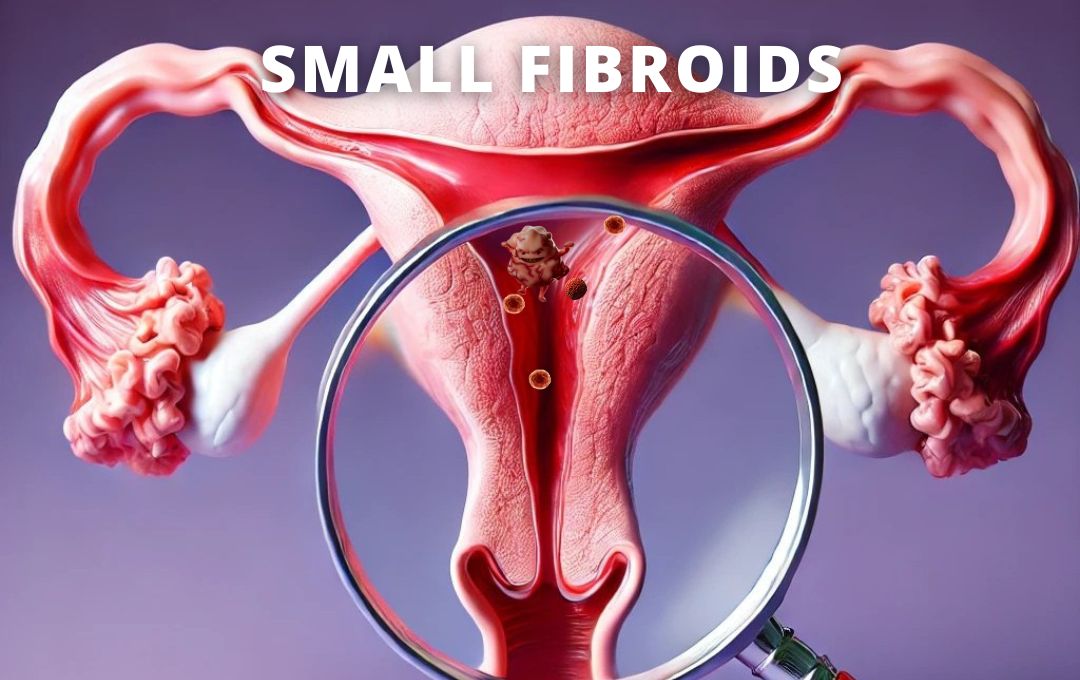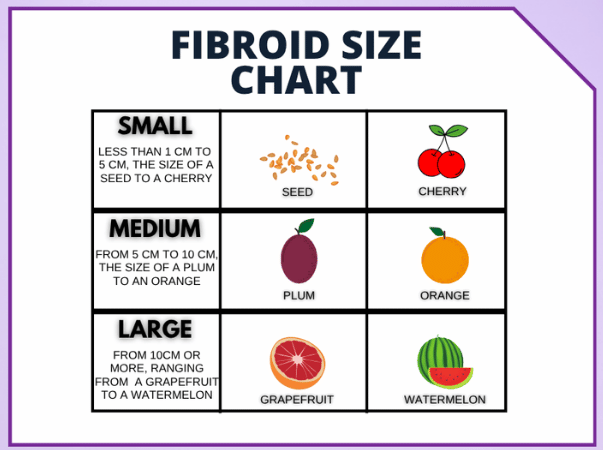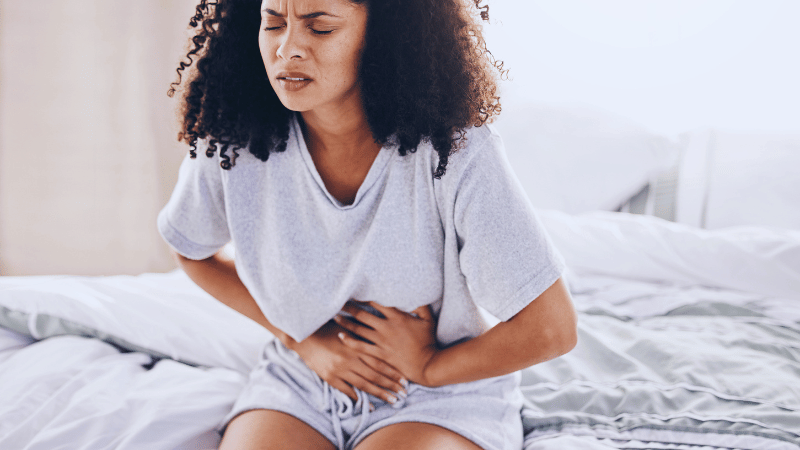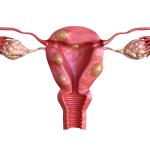
Small uterine fibroids may seem harmless at first glance, but don’t let their size fool you. It’s a common misconception that small uterine fibroids aren’t a cause for concern, yet these tiny growths can disrupt quality of life and long-term health. Left unmonitored, small fibroids can grow, multiply, or begin causing symptoms like pelvic pain, heavy periods, or even fertility challenges.
So, do small fibroids need to be removed? Not always, but they should be evaluated to determine if they’re causing symptoms or could lead to complications. Here is what you need to know about small uterine fibroids, from symptoms to when it may be time to visit a fibroid specialist.
What Is Considered a Small Fibroid?
A small size for a fibroid is considered less than 2 centimeters in diameter, or roughly the size of a blueberry or grape. These noncancerous growths develop in the muscular tissue of the uterus and are categorized by their location. There are three types of small fibroids, which include:
- Intramural fibroids: Uterine fibroids that grow within the muscular wall of the uterus. Even tiny intramural fibroids in this area can interfere with normal uterine contractions, contributing to discomfort, cramping, or irregular bleeding.
- Submucosal fibroids: This fibroid forms just underneath the uterine lining, potentially protruding into the uterine cavity. Small submucosal fibroids can lead to heavy or prolonged menstrual bleeding, and in some cases, fertility issues.
- Subserosal fibroids: A type of small uterine fibroid that develops on the outer surface of the uterus. Small subserosal fibroids can press against nearby organs, such as the bladder or bowel, causing symptoms including frequent urination, bloating, or lower back pain.
Tiny fibroids in the uterus, particularly in clusters, can cause a range of symptoms depending on their number and location. For example, having multiple small fibroids in the uterus can cause pressure, irregular bleeding, or future growth that worsens symptoms over time.
Can a Small Fibroid Still Cause Symptoms?
A small fibroid can still cause symptoms, depending on its location. Submucosal fibroids, even if small, can affect the uterine lining and cause more noticeable symptoms than a larger fibroid on the outer uterine wall.
Common symptoms caused by small fibroids include:
- Pelvic pressure or cramping
- Abdominal bloating or fullness
- Light but irregular bleeding and spotting
- Frequent urination
Symptoms from small fibroids can fluctuate, worsening during hormonal changes, such as during your menstrual cycle, pregnancy, or perimenopause. Recognizing the symptoms of fibroids, whether they are small or big, is important because they can easily be mistaken for other common conditions or dismissed as minor discomfort. Early detection provides more treatment options and helps prevent further complications.
Take our quiz to help determine if fibroids are causing your symptoms.
Can a Small Fibroid Cause Pain?
Pain is a common symptom of fibroids, even when they’re small. Pain from small uterine fibroids typically results from the fibroid pressing on nearby nerves or organs. If you’re experiencing any consistent pain, no matter how minor it may seem, it’s recommended to consult with a fibroid specialist.
Is a Small Fibroid Dangerous?
A small uterine fibroid may not seem concerning, especially if there are no noticeable symptoms. However, even small fibroids can carry hidden risks. Just because a fibroid isn’t large doesn’t mean it’s harmless. A small fibroid can become more problematic depending on its location, number, and how it responds to hormonal changes. Over time, it may lead to health issues, fertility problems, and a decline in overall quality of life.
While small uterine fibroids are rarely life-threatening, they can still cause significant health concerns if left unaddressed.
Some of the potential dangers include:
- Chronic bleeding and anemia: Small fibroids can cause prolonged or heavy bleeding, which may lead to fatigue and iron deficiency.
- Fibroid growth or multiplication: Tiny fibroids can grow or form in clusters over time, becoming harder to manage.
- Fertility challenges: Depending on their location, small uterine fibroids can interfere with conception or pregnancy.
- Quality of life impacts: Small fibroids can contribute to frequent urination, bloating, discomfort, or fatigue, disrupting daily routines and affecting overall well-being.
Early evaluation and regular monitoring for small fibroids can prevent these complications and ensure timely treatment.
When Should Small Fibroids Be Treated?
Treatment decisions for small fibroids depend not only on size but also on location, symptoms, growth rate, and fertility goals. For instance, small submucosal fibroids often require earlier treatment because they affect the uterine lining, increasing the risk of heavy bleeding or pregnancy complications.
A fibroid specialist can evaluate your individual case and determine the appropriate treatment plan based on your needs. Treatment options can range from monitoring the fibroid over time, managing symptoms with medication, or exploring a nonsurgical option like uterine fibroid embolization. With their expertise, you can make an informed decision based on your symptoms, goals, and overall health.
Minimally Invasive Treatment Option for Small Uterine Fibroids
While medications, hormonal therapy, and birth control can temporarily manage symptoms caused by small fibroids, they do not address the fibroids themselves. Minimally invasive procedures, such as uterine fibroid embolization (UFE), can offer lasting symptom relief.
This minimally invasive outpatient procedure blocks the blood flow to the fibroids, causing them to shrink and reducing symptoms. This process does not require surgery or the removal of the uterus and is an effective option for those who want symptom relief without the risks or recovery time of major surgery.
Finding Relief From Small Uterine Fibroids
If you’re experiencing pelvic discomfort, bloating, or menstrual changes that small fibroids in the uterus may cause, there are treatment options available. USA Fibroid Centers specializes in diagnosing and treating fibroids of all sizes and types with uterine fibroid embolization. We understand that even small fibroids in the uterus can significantly impact your daily life.
Our network of outpatient clinics is equipped with advanced imaging technology, ensuring a safe and effective experience from consultation through recovery. With over 40 locations nationwide, we can help you find a clinic that is close to you and takes a wide range of insurance coverage.
Find a Fibroid Specialist Near You
FAQs About Small Uterine Fibroids
Can a Small Fibroid Prevent Pregnancy?
A small fibroid can sometimes prevent pregnancy, depending on its type; specifically, submucosal fibroids are more likely to cause reproductive issues due to their location. Small fibroids can still block the fallopian tubes, alter the shape of the uterine cavity, or affect blood flow to the endometrium, all of which may impact conception.
How Often Should Small Fibroids be Monitored?
Small uterine fibroids are typically monitored every 6 to 12 months, but the exact frequency depends on your symptoms, the type of fibroid, and your overall health. Your doctor may recommend regular ultrasounds to monitor any growth or changes, unless new or worsening symptoms require earlier evaluation.
Can You Shrink Small Fibroids Naturally?
There is no clinically proven natural method to shrink fibroids, making medical treatment a necessary option for many women. While healthy lifestyle choices can support hormonal balance and overall well-being, they do not eliminate fibroids.
Can Small Uterine Fibroids be Mistaken for Other Conditions?
Small uterine fibroids can be mistaken for other conditions, such as endometriosis, ovarian cysts, or uterine polyps. Many reproductive conditions cause similar symptoms, such as abnormal bleeding or pressure, but differ in their composition. Imaging tests such as an ultrasound or MRI are necessary for an accurate diagnosis.





